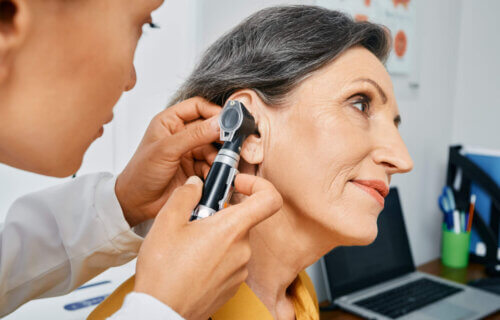ROCHESTER, N.Y. — Many people forget to bring a pair of earplugs when they’re favorite band or musician comes to town, and most end up regretting that oversight when their ears are still ringing a few days later. While the occasional jam session probably won’t result in permanent hearing loss, it’s essential to protect our ears from loud noises over the long haul. Why? Cochlear hair cells, the primary cells used by ears to detect sound waves, cannot regenerate if damaged or lost. While birds and fish can regenerate these hair cells, humans have never had this capacity. Now, however, new research from the Del Monte Institute for Neuroscience is paving the way toward identifying the mechanisms that may promote this type of regeneration in mammals. In other words, it may be possible someday to reverse hearing loss in humans.
The most common cause of hearing loss is progressive. People suffering routine exposure to loud noises like musicians, construction workers, and military personnel are more at risk. However, this can happen to anyone who attends too many concerts and stands right next to the speakers or cranks the volume up to 10 on their headphones every day.
“We know from our previous work that expression of an active growth gene, called ERBB2, was able to activate the growth of new hair cells (in mammals), but we didn’t fully understand why,” says Patricia White, PhD, professor of Neuroscience and Otolaryngology at the University of Rochester Medical Center, in a media release.
That earlier work, led by Jingyuan Zhang, PhD, a postdoctoral fellow in the White lab at the time, discovered that activating the growth gene ERBB2 pathway resulted in a cascading series of cellular events in which cochlear support cells began to multiply and activate other neighboring stem cells into becoming new sensory hair cells.
“This new study tells us how that activation is happening—a significant advance toward the ultimate goal of generating new cochlear hair cells in mammals,” Dr. White adds.
Gene sequencing breakthrough paves way for hearing regeneration
Through the use of single-cell RNA sequencing in mice, researchers were able to compare cells with an overactive growth gene (ERBB2 signaling) to other, similar cells lacking such signaling. They observed that the growth gene (ERBB2) promoted stem cell-like development by initiating the expression of multiple proteins – including SPP1, a protein known to signal through the CD44 receptor. The study confirmed that the CD44 receptor was present in cochlear-supporting cells. This increase in cellular response promoted mitosis among the supporting cells, considered a key event for regeneration.
“When we checked this process in adult mice, we were able to show that ERBB2 expression drove the protein expression of SPP1 that is necessary to activate CD44 and grow new hair cells,” adds study first author Dorota Piekna-Przybylska, PhD, a staff scientist in the White Lab. “This discovery has made it clear that regeneration is not only restricted to the early stages of development. We believe we can use these findings to drive regeneration in adults.”
“We plan to further investigation of this phenomenon from a mechanistic perspective to determine whether it can improve auditory function after damage in mammals. That is the ultimate goal,” Dr. White concludes.
The study is published in Frontiers in Cellular Neuroscience.

